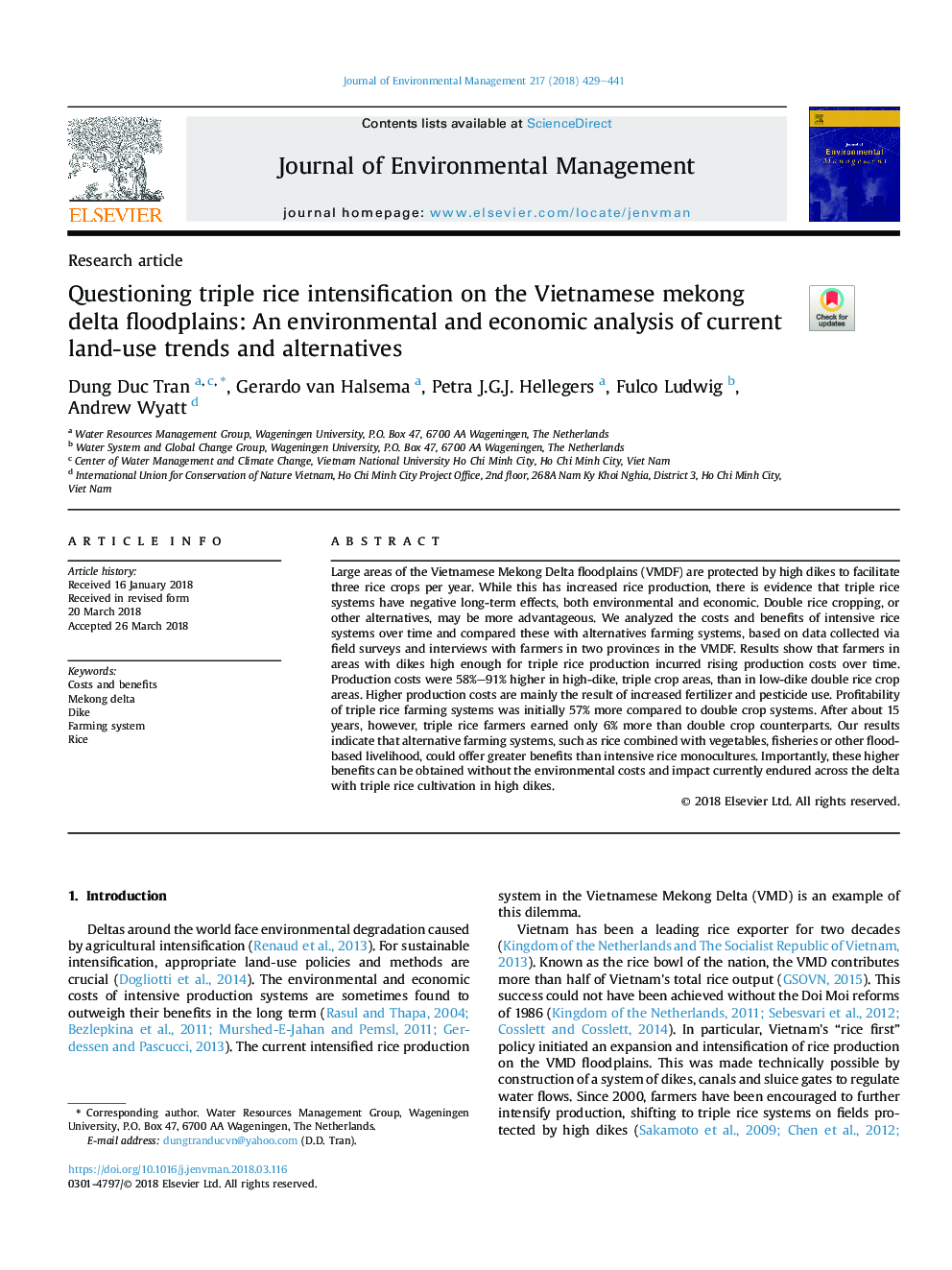| Article ID | Journal | Published Year | Pages | File Type |
|---|---|---|---|---|
| 7477410 | Journal of Environmental Management | 2018 | 13 Pages |
Abstract
Large areas of the Vietnamese Mekong Delta floodplains (VMDF) are protected by high dikes to facilitate three rice crops per year. While this has increased rice production, there is evidence that triple rice systems have negative long-term effects, both environmental and economic. Double rice cropping, or other alternatives, may be more advantageous. We analyzed the costs and benefits of intensive rice systems over time and compared these with alternatives farming systems, based on data collected via field surveys and interviews with farmers in two provinces in the VMDF. Results show that farmers in areas with dikes high enough for triple rice production incurred rising production costs over time. Production costs were 58%-91% higher in high-dike, triple crop areas, than in low-dike double rice crop areas. Higher production costs are mainly the result of increased fertilizer and pesticide use. Profitability of triple rice farming systems was initially 57% more compared to double crop systems. After about 15 years, however, triple rice farmers earned only 6% more than double crop counterparts. Our results indicate that alternative farming systems, such as rice combined with vegetables, fisheries or other flood-based livelihood, could offer greater benefits than intensive rice monocultures. Importantly, these higher benefits can be obtained without the environmental costs and impact currently endured across the delta with triple rice cultivation in high dikes.
Related Topics
Physical Sciences and Engineering
Energy
Renewable Energy, Sustainability and the Environment
Authors
Dung Duc Tran, Gerardo van Halsema, Petra J.G.J. Hellegers, Fulco Ludwig, Andrew Wyatt,
